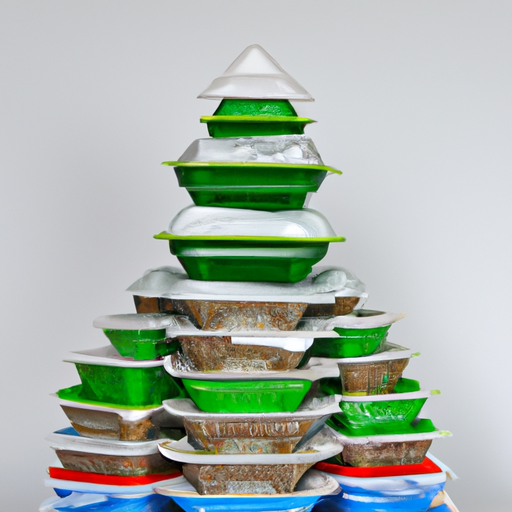Packaging: The Unsung Hero in Reducing Food Waste
Hi there, let’s talk about a topic that might not be the most exciting, but is incredibly important: Packaging and how it can help reduce food waste. Firstly, let’s define what food waste is; it’s any food that is discarded, lost, or uneaten. Sadly, this happens all too often and contributes to the global issue of food waste, which has serious economic, environmental, and social consequences. On the other hand, packaging plays a crucial role in preserving food and reducing food waste. So, let’s learn more about how packaging solutions can make a difference.
Why Packaging is Vital in Reducing Food Waste
As a food waste specialist, I can confidently say that packaging plays a crucial role in reducing food waste. It might seem odd because packaging inherently adds to the volume of waste we produce, but it has proven to be beneficial in many ways.
Protection from physical damage
One of the main reasons why packaging helps reduce food waste is that it protects food from physical damage. Without proper packaging, fruits and vegetables get bruised, punctured, or smashed, and these imperfections cause them to spoil faster. With packaging, however, the food can remain intact during transit, delivery, and handling, thereby extending its shelf life and reducing spoilage.
Prolonging shelf life
Packaging also helps prolong the shelf life of food. Certain types of packaging materials are designed to regulate oxygen and carbon dioxide levels, effectively slowing down the natural decay process. This means that packaged food can stay fresh and edible for a longer period, giving consumers more time to consume them. This benefit is particularly significant for perishable foods such as meats and dairy products, which have a limited shelf life.
Increasing convenience
Finally, packaging increases convenience, which is essential in reducing food waste. Packaged foods are easier to portion, store, and transport than unpackaged ones. By simplifying these everyday tasks, packaging encourages consumers to buy more food than they would have otherwise. This means fewer shopping trips, fewer impulse buys, and ultimately less food waste.

Overall, packaging undoubtedly has a vital role in reducing food waste. By protecting food from physical damage, prolonging the shelf life, and increasing convenience, packaging can help reduce the amount of food that goes to waste every day.
Creative Packaging Solutions Help Reduce Food Waste
As a food waste reduction specialist, I have seen how packaging can make or break a product’s shelf-life. Often, the way food is packaged determines how long it stays fresh before it goes bad. Packaging that extends food’s shelf-life helps reduce food waste in our landfills. In this section, let’s explore different packaging solutions that are helping to reduce food waste.
Modified atmosphere packaging
This form of packaging modifies the environment inside the package by altering the air’s composition. It replaces oxygen with a combination of other gases such as nitrogen, carbon dioxide, or argon. The result is that the food remains fresher for longer. Modified atmosphere packaging is ideal for fresh fruits, meats, and vegetables that are highly perishable.
Vacuum-sealed packaging
Vacuum-sealed packaging ensures that the food is tightly sealed in an airless environment. This type of packaging extends the shelf-life of products like cheese, deli meats, and precooked foods. The vacuum environment helps to preserve the food by preventing oxidation. Vacuum bags can be used to store pre-cooked meals, rice or meat.
Individually-wrapped foods
This trend is becoming more and more popular, and it’s helping to reduce food waste. Individually-wrapped foods, such as snack bars, yoghurt cups and fruits, are convenient for on-the-go eating. The packaging also prevents spoilage as the food is portioned in the right quantity. This method helps to reduce food waste in small households that cannot finish larger packages of food.
In conclusion, choosing packaging solutions that help reduce food waste is an important decision to make. From modified atmosphere packaging to individually-wrapped foods, these creative solutions help to keep food fresh for longer. Let’s all do our part to help reduce food waste from our homes and restaurants.
4. Conclusion: So, What’s the Bottom Line?
Alright, folks, it’s time to wrap this up. From what we’ve discussed, packaging does play a significant role in the fight against food waste. We’ve talked about how it can provide protection from physical damage, prolong shelf life, and increase convenience. These benefits can make a huge impact on food waste reduction.
Some examples of packaging solutions that can help include modified atmosphere packaging, vacuum-sealed packaging, and individually-wrapped foods. These methods can preserve food longer and increase the shelf life, leading to less waste.
And that’s a wrap! But before I go, I want to remind you to check out bakedoccasions.com, where you can read more about the impact of packaging on reducing food waste! Let’s all do our part to help save the planet, one bite at a time.

